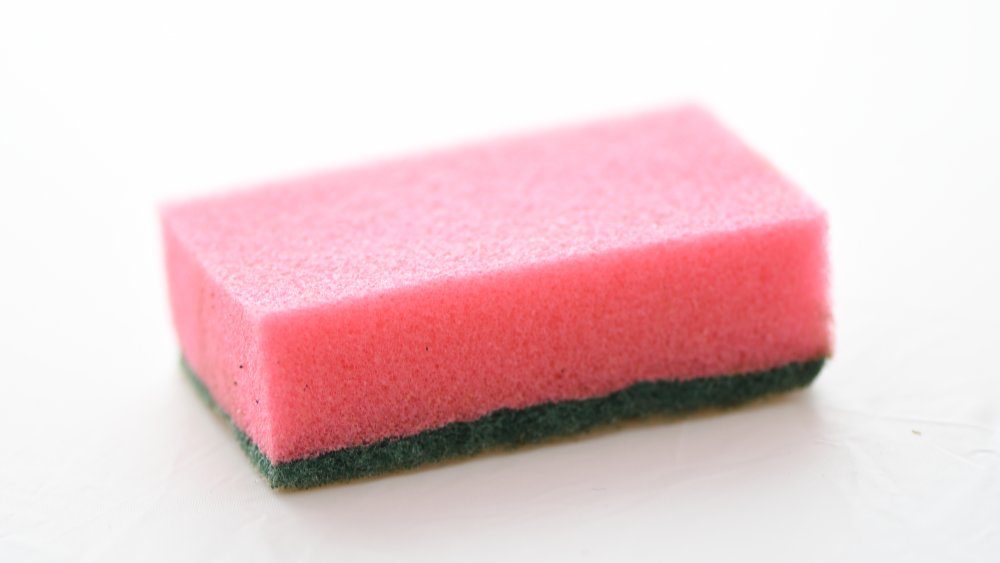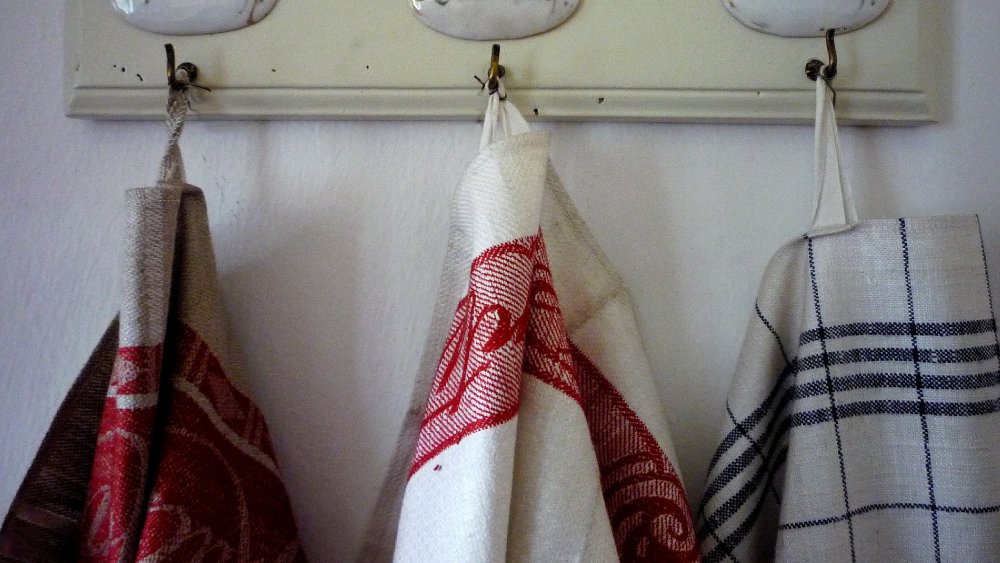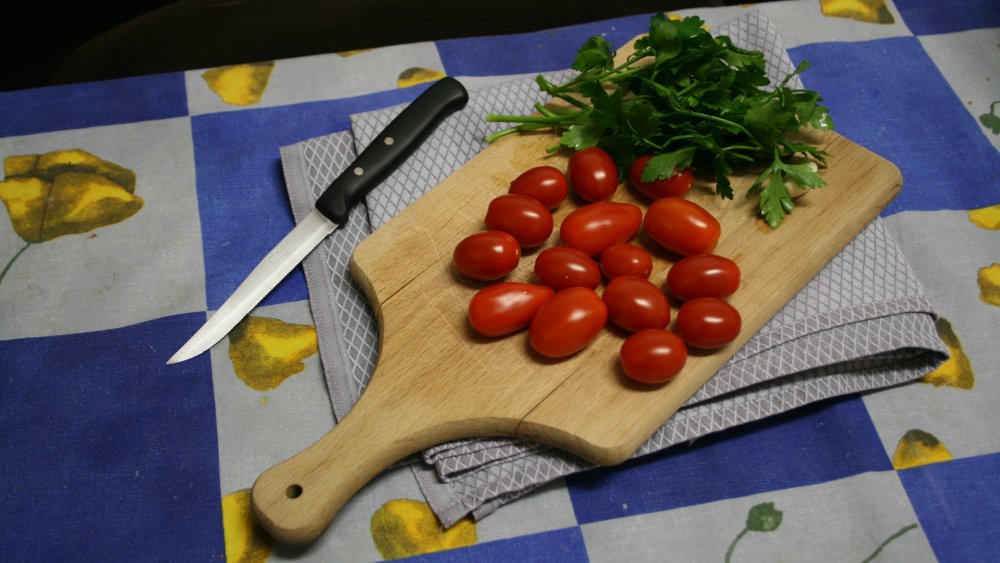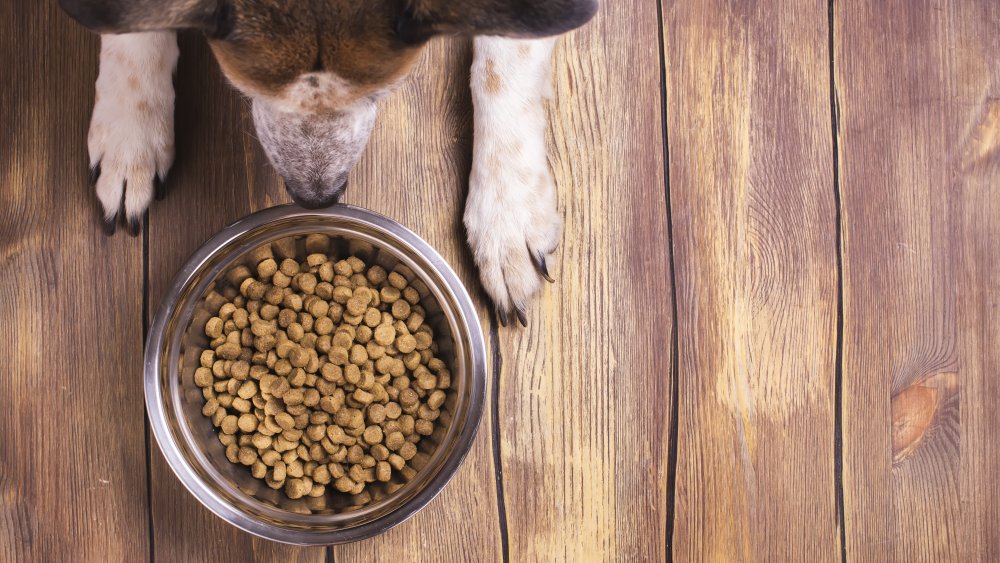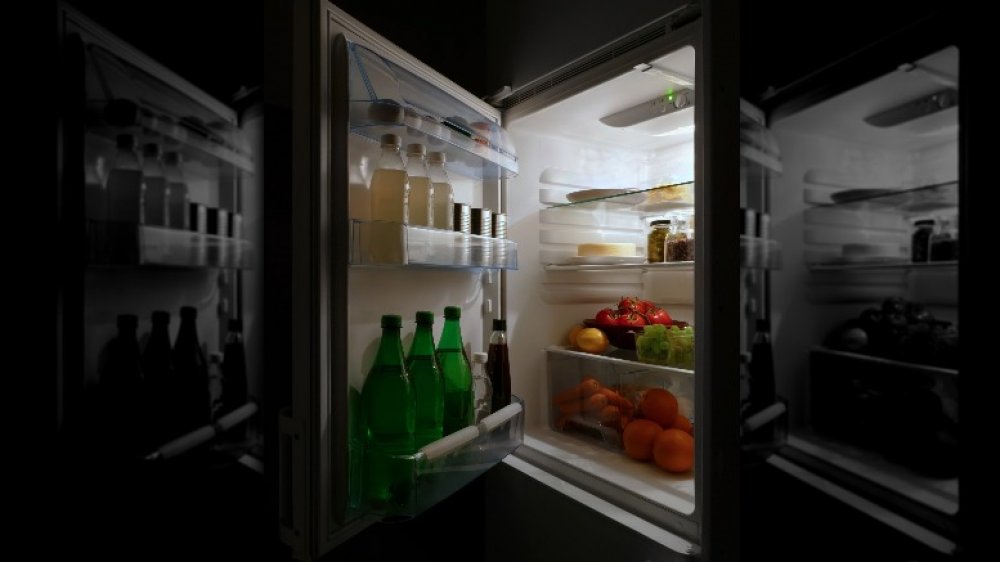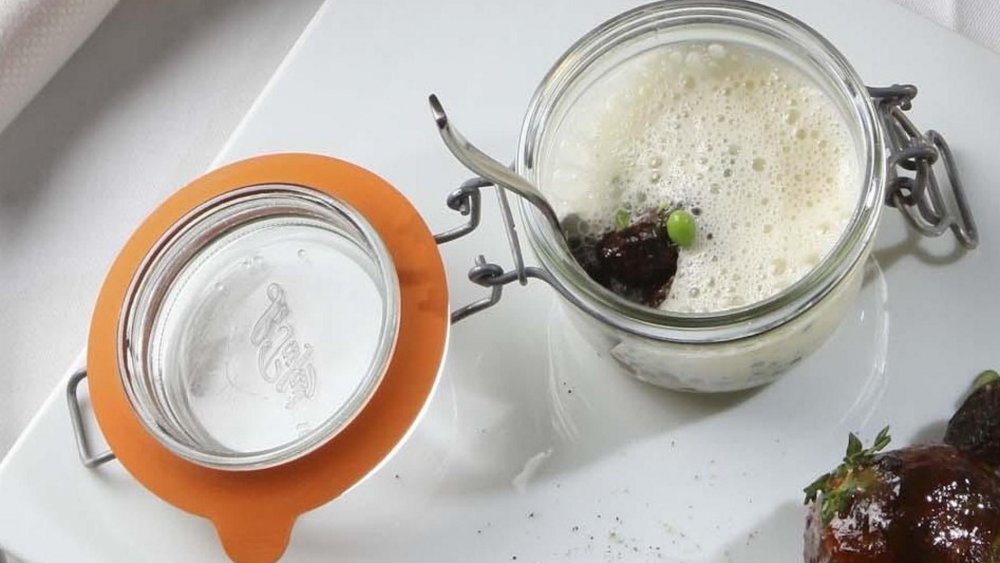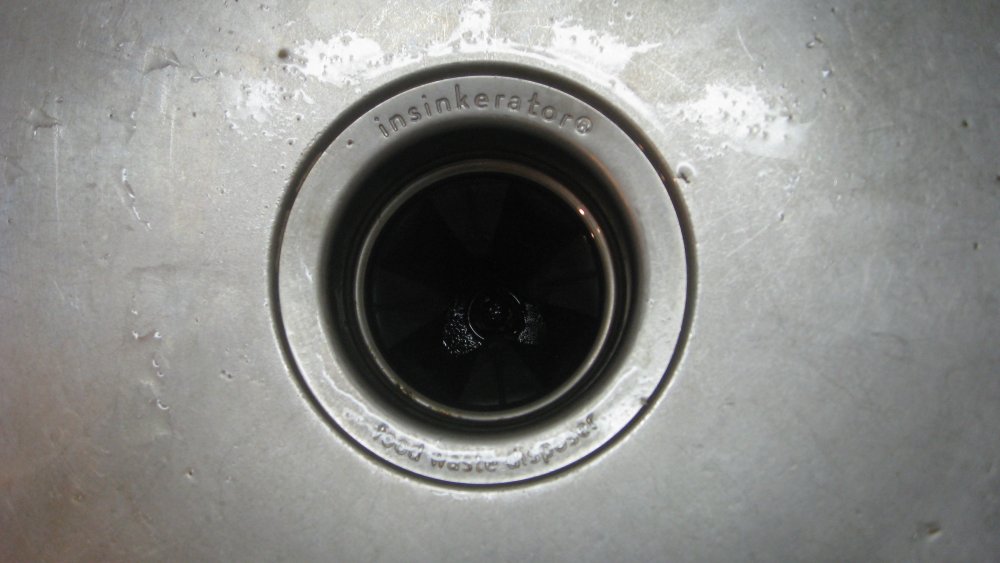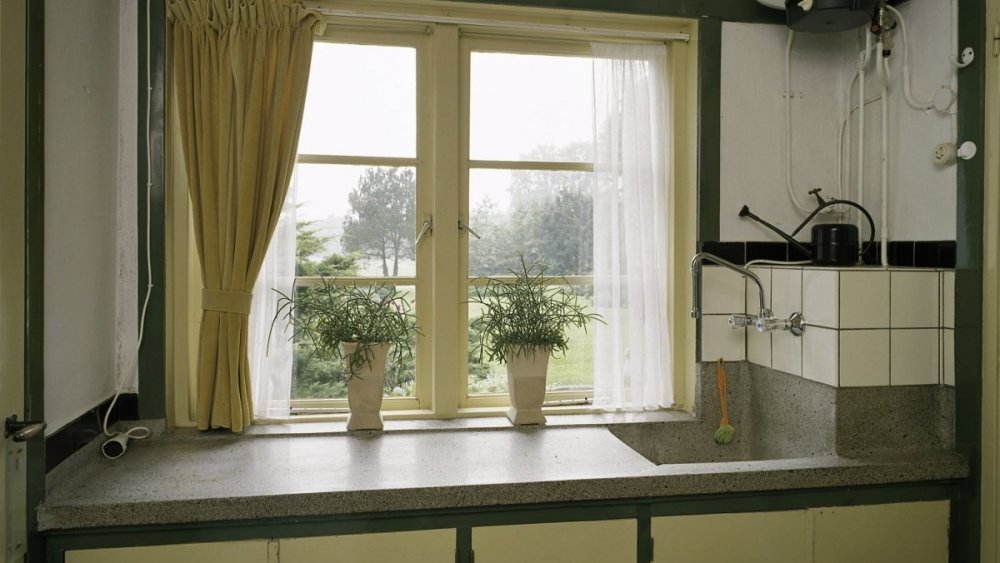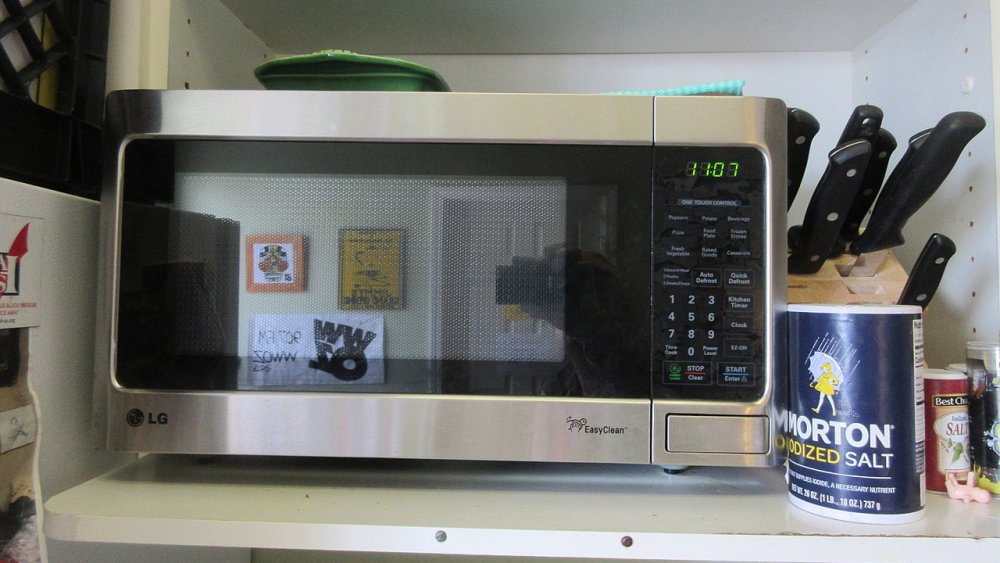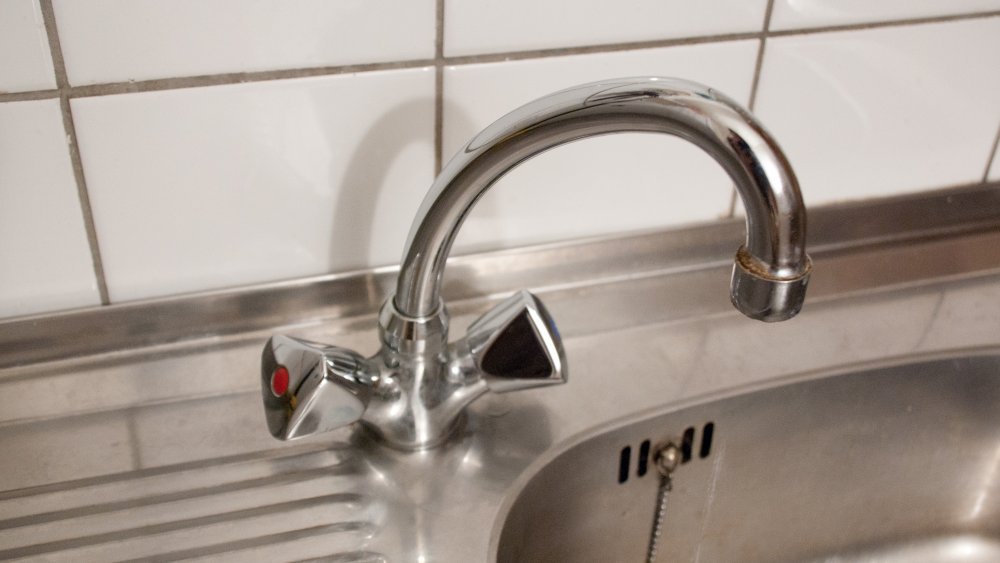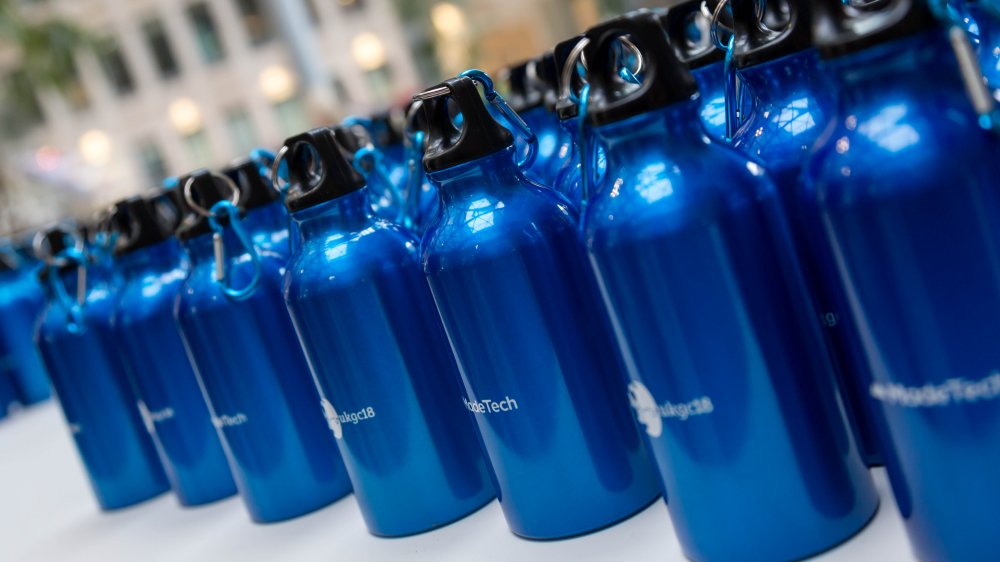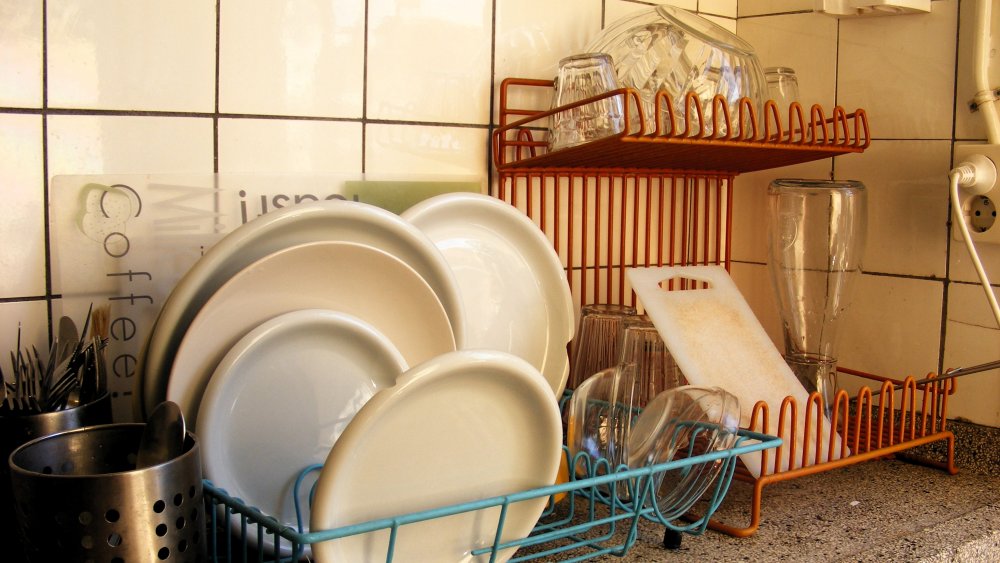These Are The Grossest Things In Your Kitchen
It's fair to say that most of us put in a good amount of work to keep our kitchens clean. Maybe we're not all June Cleaver types cleaning behind the stove every single day, but we know how to wash dishes and wipe down a counter. Nothing in our view is currently growing or moving of its own will that shouldn't be doing so already. The dishwasher is running. The sun is shining. We've even cleaned out the leftovers sitting in the fridge. Everything's fine, right?
Yet, if you start to think, to really think, about all of the potential grossness in your kitchen, you might begin to second-guess your standard cleaning plan. Some surfaces and tools in your space might surprise you by the sheer amount of mold, bacteria, and other nasties that could be lurking right in front of you.
None of this is meant to induce panic, though perhaps you want to take this as a gentle sign that a few things in your kitchen could use extra attention. Most of all, don't let this daunt you from taking action. For every gross thing mentioned here, there's an easy and thorough way to clean it.
Sponges
Ironically, one of the key tools used to clean your dishes is also one of the filthiest things in your kitchen. According to a 2017 study published in Scientific Reports, used kitchen sponges are frankly nasty. Many in the study showed significant populations of bacteria when compared to ones fresh out of the package. One of the most dominant strains found in the study usually grows on human skin, meaning that we may be one of the primary ways bacteria get snuggly in the sponge material.
What should you do if you want a cleaner sponge? While sanitizing sponges through boiling or microwaving might temporarily help, bacteria from your hands and food particles quickly find their way back into the material. Even worse, this type of cleaning might encourage stronger resistant bacteria to grow, making the process of defeating them more and more difficult as time goes on.
The best move is to simply replace your cleaning sponges on a regular basis, the Center for Science in the Public Interest says. Try to keep your kitchen surfaces dry, too. Wet sponges are more welcoming to bacteria than dry ones.
Dish towels
Dish towels, another kitchen cleaning mainstay, could be playing host to harmful bacteria. That's the case for many textiles, which often prove to be nice, cuddly homes for germs. According to the American Society for Microbiology, towels that were reused for different tasks, like drying hands and cleaning counters, tended to have a higher microbial load. That count of bacteria got higher for households with many members, those with children, and people with a large extended family. Some of the cultured bacteria included those that can cause food poisoning — like E. coli and S. aureus.
According to AARP, you should address the problem simply by switching out your towels more often. Kitchen towels should go into the wash after one or two days of use. You can also control the conditions that help bacteria grow. Try to keep dish towels and other kitchen textiles as dry as you can. Even better, limit the ways you use each towel. One that's used the wipe down your counters should go into the wash. Just use a different one to dry dishes.
Cutting board
Cutting boards are potentially crawling with germs, molds, food particles, and other general grossness. Some of the sources of the nastiness might surprise you, like produce. Fruit and vegetables are great additions to your diet, but they can transfer bacteria to your cutting board while you're chopping. If you also use the board to cut chicken or other meats, then you run the risk of transmitting serious pathogens like salmonella and campylobacter, which the CDC says can cause nausea, fever, and stomach cramps.
The best solution is to simply wash your cutting board often and well. Today recommends using plenty of soap and hot water to wash it after each use. You might also put it in a dishwasher or wipe it down with a diluted solution of bleach in water, though be sure to give the cutting board a good rinse to make sure all of the bleach is washed away after it's sanitized everything.
One of the best things you can do to cut down on germs is to keep different cutting boards for different uses. That means chicken gets chopped up on one surface, while veggies are diced on another. Sure, that creates extra dishes, but that's a small price to pay for a reduced risk of food poisoning, right?
Your pet's food bowl
Humans are typically the ones most concerned about cleanliness inside the kitchen, but that doesn't mean we're the only ones affected by the variety of crud that can build up there. If you've got a pet that chows down while in the kitchen, you may want to look out for them, too.
Take a moment to consider their food and water bowls. When was the last time you cleaned them? If it's been a while, wash them like you would any other dish, with soap and hot water, followed by a good rinse. That's because, according to Phys Org, those bowls can harbor potentially dangerous bacteria like salmonella, E. coli, and antibiotic-resistant MRSA. Plastic and ceramic dishes generated the greatest number of nasties, as they tend to be porous and therefore more welcoming to germs and molds. That said, you should still wash containers made out of other materials, like stainless steel.
If you need some extra motivation, remember that those germs, which you can pick up when handling your pet's meal, can also really mess up the human gut. It's in everyone's best interest to take an extra minute and wash out your beloved pet's dishes, too.
The bottom of your fridge
Let's be honest: your fridge is probably a mess. It's easy to ignore the buildup of fuzzy leftovers and mysterious gunk on the inside and outside, at least until the smell gets persistent.
Now, maybe you're a model fridge owner. Maybe you dutifully eat all of your leftover meals before they go bad. Perhaps you do a weekly survey and wipe down the worst stains and spills inside. But have you ever considered gravity?
It seems incredibly simple, but the truth is that gravity helps germs congregate in the lowest parts of your fridge. According to a report from CBS, the vegetable drawers at the bottom of a refrigerator are some of the dirtiest things in a kitchen. Some of that has to do with raw produce and raw meat if you're storing those things in sequestered compartments. Salmonella was found in 25% of vegetable crispers in one study, per CBS.
But, Food & Wine claims, that's also because all of the potentially germ-laden condensation in your fridge simply drips down to the lower levels. So, be sure to clean those shelves and drawers every couple of weeks. Also, don't store meat above other foods, since pathogens like E. coli can get an assist from gravity and fall onto the stuff below.
Gaskets
Without gaskets, your fridge would be thrown back centuries into food safety oblivion. Seriously, it's hard to overstate just how useful these tiny little things can be to us. They seal off containers, keeping food fresh. They line the edge of your refrigerator and freezer doors, helping the cold stay inside and hopefully saving you money on energy bills. They seal off parts of your blender, keeping that morning smoothie from flying onto you and your counters. Gaskets are great ... as long as you clean them.
Like so many small, underappreciated kitchen gadgets, those little rubber gaskets often get missed during even the deepest cleaning sprees. But take a moment and consider the kind of grossness that could accumulate on an unwashed, porous rubber surface.
According to a 2013 study conducted by NSF International, blender gaskets tested positive for a rather alarming array of germs, including E. coli, salmonella, and a variety of yeasts and molds. The refrigerator seal was also a potential breeding ground for listeria, which the Mayo Clinic says can be dangerous for pregnant people, seniors, babies, and anyone with a weakened immune system.
So, take a moment to appreciate all the work those gaskets do around your kitchen. Just be sure to also take a few extra minutes to clean them with a kitchen-friendly disinfecting agent, or plain soap and hot water.
Garbage disposal
If you've got a garbage disposal, they can be pretty helpful. Disposals help to whisk away all of the little bits of food that are clinging to plates and bowls. Yet, it's important to take care of these modern kitchen gadgets. For one, a broken garbage disposal can turn pretty heinous pretty fast, especially if clogged food waste sits in there for extended periods of time.
Then, there are possible pathogens to consider. If food and grime are building up in your sink and disposal, then they can also encourage the growth of germs as they would elsewhere in your kitchen.
Cleaning your disposal, with its rotating metal blades, can seem daunting at first. Thankfully, there's an easy way to clean it while staying safe, per Consumer Reports. First, the rubber panel on top of your disposal, usually called a splash guard, is normally removable. You can take that out and wash it with baking soda and water, or even put it on the top shelf of your dishwasher. As for the disposal itself, you can drop in a few ice cubes, a tablespoon of baking soda, a couple of lemon slices, a teaspoon of bleach, and a few more ice cubes. Run it without water until the grinding stops, then turn on the faucet and let it run for another 30 seconds. This will help deodorize and disinfect that disposal, all without the alarming prospect of putting your hand inside.
Kitchen counters
Even the most scrupulous cook is going to make a mess. That's part of the joy of cooking — or at least one of the minor hazards you have to endure. So, you spill some flour, or maybe let the vegetable scraps sit for just a moment on the counter. No big deal, right?
Except, of course, for the germs. According to CBS, kitchen countertops can get alarmingly germy. They can carry coliform bacteria, which is typically found in the digestive tracts of humans and animals. Generally speaking, you don't want the leavings of anyone's digestive tract, however small and unseen, hanging out on your countertops. The same study used by CBS also found that countertops can also carry mold, which stands to sicken people as much as some bacterias can.
To clean your counters, first, take a look at how they're made. Most materials can stand up just fine to a diluted solution of bleach and water, though be aware that some materials, like sealed granite or laminate, might need a gentler material like soap and water. Either way, it's a smart move to give your countertops a regular wipe down with a cleaner every few days.
Microwaves
We've all ignored the alarming crud buildup inside a microwave at one point or another in our lives. Sometimes, we forget to put a cover on top of the leftovers being reheated, things begin to bubble, and suddenly there's a bit of soup on the inside of the microwave.
Visually, it can get pretty unappetizing inside a microwave, especially if you let things go on for too long without a simple wipedown. Like other neglected surfaces, it can also start to encourage the growth of some pretty nasty bacteria and other possible pathogens, too.
Now that you're guiltily wiping down the inside of the microwave, consider the outside. When was the last time you cleaned the handle and the buttons? These parts need some attention as well, Reader's Digest suggests. You probably touch it all the time, so there's a decent chance that these surfaces have built up some serious crud. Wipe it down with a diluted solution of bleach in water, followed by a rinse with plain water.
You can also use disinfectant wipes, but Reader's Digest strongly recommends you make sure the surface is clean first, or else you'll just be pushing dirt around with your wipe.
Faucets
Most of us are fortunate enough to live somewhere with clean tap water. It's a vast improvement on water access compared to past centuries, where, if water was readily available, it had no guarantee of cleanliness.
Even though the water coming out of your tap has been treated to make it safe to drink, that doesn't mean it can't pick up something gross from the faucet itself. If you or someone else in your home has touched it with dirty hands, then there might be germs lurking right at the source. According to NBC, over time, the buildup of bacteria and other gunk can create something called a "biofilm" that can cling to the faucet. If it goes on for long enough, that biofilm can grow so large and dense that parts of it might break off and fall into your glass or dish.
Luckily, most faucets can be cleaned pretty easily. NBC recommends taking off the metal aeration screen at the end of the faucet, if you can, and soaking it in a solution of bleach and water. Once you've put the screen back on, let the tap run for a few minutes to rinse out any remaining bleach.
Reusable water bottles
Having a reusable water bottle is pretty great for the environment and your body. It helps to reduce plastic waste from single-use bottles and can encourage you to drink a healthy amount of water throughout the day. But when was the last time you cleaned your bottle?
Even under the best of circumstances, water isn't usually sterile and neither is the way we handle our water bottles. The truth is, you should be washing it regularly to keep pathogens or just plain old dirt from building up. Ideally, you'll clean it every day, not just with a simple rinse of water, but with proper cleaning agents.
Luckily, per Health, there are plenty of ways to get that done. You might be able to just put your water bottle in the dishwasher, but be sure to check the bottle first to make sure you can. There's also always soap and water if you don't mind washing by hand. A solution of vinegar and water is a food-safe cleaning liquid or, if it's really funky in there, a bit of hydrogen peroxide can effectively cut into the most serious gunk buildup.
Tiles and grout
Tiles in a kitchen are generally a smart move, compared to other materials. When's the last time someone thought a carpeted kitchen was a good idea, anyway? It's safe to say most of us agree that a tiled kitchen is easier to clean on a regular basis. But, how often do you clean it and, maybe more importantly, what about the grout between all those tiles?
Grout is the sandy paste that goes between tiles in order to fill gaps and provide some reinforcement. Because it's usually applied as a mixture of water, cement, and sand, that means that the dried result is strong but pretty porous. As you may already know, porous materials in the kitchen can turn exceedingly gross pretty quickly. Bacteria and mold especially love to take up shop there.
If you happen to have a tile backsplash above your counter and around your sink, then check it for telltale mold in the grout. You may also spot grease and dirt that's built up over time. Thankfully, a little bit of elbow grease and some handy cleaning products will fix this in short order. WFAA ABC suggests using a bleach solution, which, if left to sit for a few minutes, will help sanitize the surface and break down any stubborn stains. You can also use a grout brush or a new toothbrush to scrub in between tiles. Once you're done, consider getting the grout sealed if all that scrubbing really tired you out.

